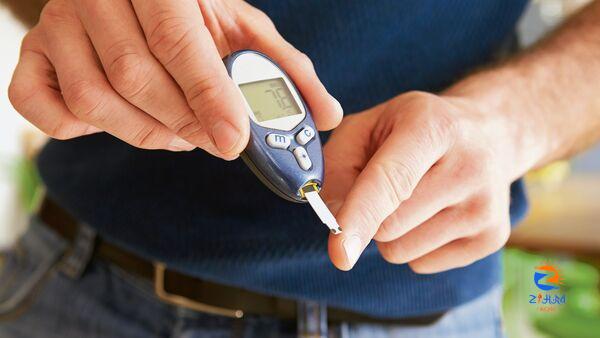
[ad_1]
Indians are not alien to the fact that the Asian land has been witnessing rising cases of Diabetes, pre-diabetes, and hypertension. In a recent study by The Lancet Diabetes and Endocrinology journal it has been revealed that prevalence of diabetes in India is 11.4%, while 35.5% and 15.3% of people suffer from hypertension and prediabetes respectively.
The study might have indicated that along with increased urbanisation, and due to the Covid pandemic, India progressed towards becoming a sicker nation plagued with lifestyle diseases.
The study, conducted by the Madras Diabetes Research Foundation (MDRF) in collaboration with the Indian Council of Medical Research (ICMR) and funded by the Ministry of Health and Family Welfare, also found that the prevalence of generalised obesity and abdominal obesity in India stood at 28.6 and 39.5 per cent, respectively.
The estimate shows that 254 million people in India had generalised obesity, and 351 million had abdominal obesity in 2021.
The largest epidemiological study on diabetes and non-communicable diseases (NCD) estimates that in 2021, there were 101 million people with diabetes in India, 136 million with prediabetes, and 315 million had high blood pressure.
All metabolic NCDs except prediabetes were more frequent in urban than rural areas. In many states with a lower human development index, the ratio of diabetes to prediabetes was less than 1.
State wise division
In 2017, the team found that the prevalence of diabetes in India was around 7.5 per cent, meaning there has been an increase of over 50 per cent in the burden since then.
Among the states, Goa (26.4 per cent) had the highest prevalence of diabetes and Uttar Pradesh (4.8 per cent) had the lowest, while Sikkim (31.3 per cent) and Mizoram (6.8 per cent) had the highest and lowest burden of prediabetes.
Punjab (51.8 per cent) had the highest prevalence of hypertension while Meghalaya (24.3 per cent) had the highest burden, the researchers said.
Experts sound alarm
“The steep increase in NCDs can be attributed mostly to the lifestyle choices of people such as diet, physical activity, stress levels etc. The positive news is that interventions can be used to curb the trend. Our study has multiple implications for the planning and provision of health care in India,” Dr. R. M. Anjana, President, MDRF, told PTI.
“The diabetes epidemic in India is in transition, with some states having already reached their peak rates while others are just getting started. These states may see an increase in prevalence over the next 3-5 years before plateauing,” Anjana, lead author of the study, said.
“The prevalence of diabetes and other metabolic NCDs in India is considerably higher than previously estimated. While the diabetes epidemic is stabilising in the more developed states of the country, it is still increasing in most other states,” the authors of the study said.
“Thus, there are serious implications for the nation, warranting urgent state-specific policies and interventions to arrest the rapidly rising epidemic of metabolic NCDs in India,” they said.
Download The Mint News App to get Daily Market Updates.
Updated: 09 Jun 2023, 10:35 PM IST
[ad_2]